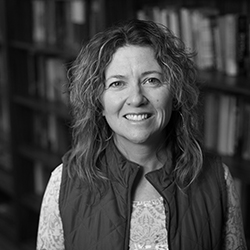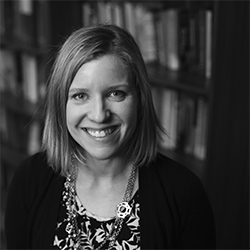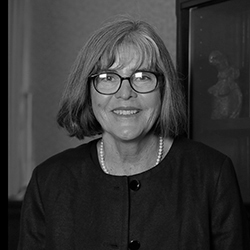
Monique Turner’s research has focused on understanding cultural identity, values, and social norms. Turner argues that an in-depth understanding of the audience for a campaign or intervention is vital to its success. Specific recent projects include understanding the role African American social identity plays in breastfeeding intentions, using community-based research to develop a nutrition intervention for Central-American immigrant families with young children, and identifying patient-provider communication patterns among Asian American immigrants. She has also worked on projects focused on obesity stigma and mental health treatment.

Maria Lapinski conducts extensive research on international and intercultural communication. Her work reaches across the globe and includes research in Spain, Italy, Peru, New Zealand, China, Nigeria, Mexico, and beyond. Her research has focused on the role of culture in developing social norms and how those social norms influence all kinds of choices people make regarding their health and environment. She has also looked at the ways groups stigmatize or celebrate diverse perspectives. Topically, recent projects have examined the role of race and culture in water and energy conservation, breastfeeding decisions, hand-washing behavior, and prenatal care. She focusses particularly on co-cultural groups who are non-dominant in societies.

Mary Bresnahan, Emeritus, has a decades-long research program focusing on health disparities and interethnic communication in the U.S. Mary’s work has most recently covered obesity stigma, health disparities in maternal/child health and breastfeeding, breastfeeding stigma in the workplace, reducing bias to Muslim immigrants and refugees in the US, reception of Latinx immigrants compared to Muslim immigrants in the U.S., and Anti-Asian American microaggression during COVID.

Ralf Schmälzle, conducts communication neuroscience research with a focus on what unites humans, i.e. how their brains respond similarly 'under the skin' (in the brain) - regardless of differences in surface characteristics (like age, race, sex, etc.). For instance, he studies how peoples' brains start to tick similarly as a collective whole while they are processing pro-social messages, such as inspiring media content about timeless topics like friendship, kindness, and honesty, or health communication topics more broadly. He also studies brain responses in various social and interaction situations. For example, he has examined brain responses during ostracism, using a virtual ball-tossing game in which people are socially excluded from a small group. Currently, he studies bio-behavioral processes during cooperative and conflict interactions, again with a focus on how communication causes and affects biological processes. A related, ongoing line of his work examines brain mechanisms associated with stereotyping during person perception: Specifically, recent research studied the brain mechanisms underlying peoples' use of 'intuitive snap judgments' to gauge the HIV risk of potential partners in online dating platforms.


Collaborating with researchers from Criminal Justice and Psychology, Amanda Holmstrom and Sandi Smith have investigated how communication patterns, social support, and memorable messages improve communication between people on probation and parole and their supervising agents. This work takes into account diversity in gender, race, ethnicity, and culture, to improve these conversations and help people on probation and parole have agency to avoid alcohol and drug use and to successfully complete their probation or parole.

Elizabeth Dorrance Hall’s research focuses on family communication across race, ethnicity, and nationality. She has explored how family communication patterns influence food beliefs and health for different racial/ethnic groups in the United States and how couples use communication to cope with work-family and family-work stressors in Slovenia. She has conducted a multinational study of couple communication around needing space during the COVID-19 pandemic. Her work on international college students identified how family communication can help international students adjust to a new culture.